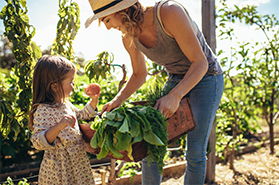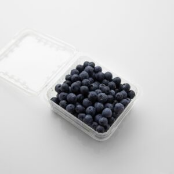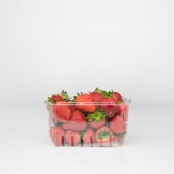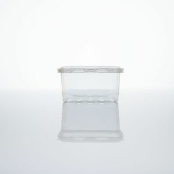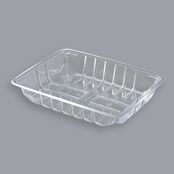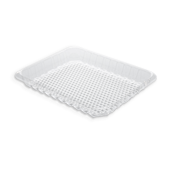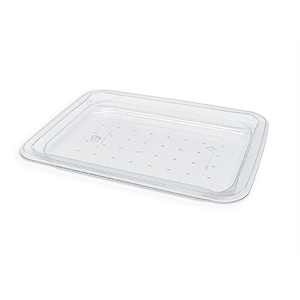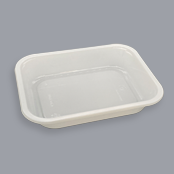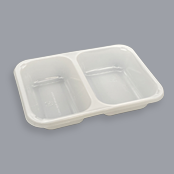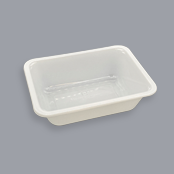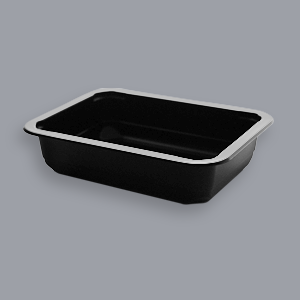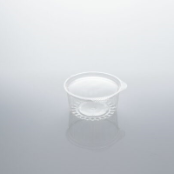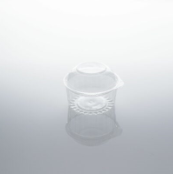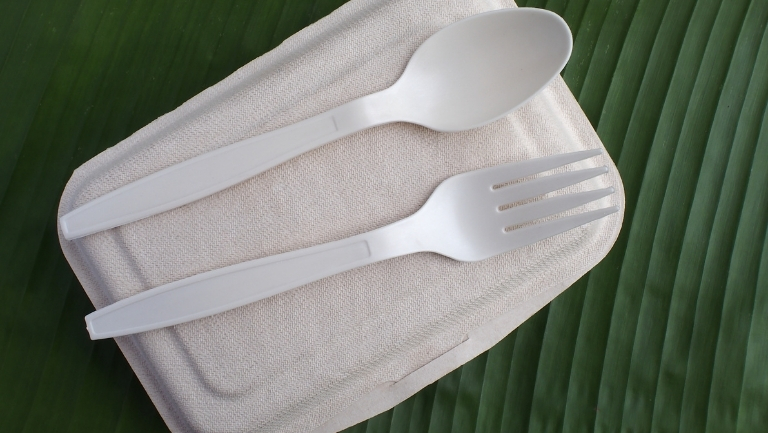
What the National Plastics Plan means for biodegradable and starch plastics
On the surface, biodegradable plastics seem like an ideal solution to Australia’s plastics problem. After all, 2.5 million tonnes of plastic waste is generated in Australia every single year, of which 84% is sent to landfill, where it will take hundreds of years to decompose. Unlike some other forms of waste generated in Australia, the largest contributor to plastic waste is households. Approximately 40% of that waste is plastic packaging, and to drill down even further, the food and beverage industry is the main end-user of plastic packaging; in other words, the main plastic waste culprit in Australia is food & beverage packaging. This is an enormous environmental problem that shouldn’t be underestimated and is likely to only grow as the population expands; it also means that decisions made by businesses and consumers surrounding plastic packaging can be truly game-changing.
Consumers are increasingly dollar voting by making more environmentally sustainable purchase decisions, as are business owners making ethical decisions about how to minimise their carbon footprint (as well as benefiting from the pricing premium that consumers will pay for planet-friendly options). However, neither businesses nor consumers have perfect information available to them about what the best purchase decisions are, regardless of best intentions; which is why the National Plastics Plan and its stance on biodegradable plastics.
Bioplastics: friend or foe?
In theory, biodegradable plastic is a very promising concept: a form of plastic that will break down into natural components and disappear harmlessly into the environment. However, at this stage, there is no such thing as a plastic that simply disappears harmlessly. In fact, while the phrase biodegrable suggests that these plastics are made with natural, harmless materials, much of what is being sold in the market as biodegradable is just stock-standard plastic, which is technically degrable (over hundreds of years, that is). This greenwashing is made possible by a worrying lack of regulation or industry consensus to date around what can be called a biodegradable plastic.
Furthermore, what’s termed biodegradable plastics is often merely fragmentable plastics that are actively harmful to the environment. Describing these as biodegradable may be an effective marketing tactic to attract well-meaning environmentally-conscious consumers and business owners who believe they have made the best possible packaging choice. However,
the result is far from positive for the environment. These fragmentable plastics are essentially business-as-usual fossil-fuel plastics, to which chemicals are added to make them oxo-degradable, so that they fragment over time into tiny microplastics which are so small that they can’t be seen by the naked eye. These plastic fragments are essentially as damaging as the “microbeads” which were very publicly phased out in rinse-off cosmetics, personal care and cleaning products last year.
Despite being misleadingly presented as biodegradable plastics, microplastics end up in our waterways and natural environments, where they can be absorbed by plants and animals, and end up part of our food chain; in fact, it’s estimated that we’re already consuming up to 113,000 particles of microplastics per year. This would be astonishing and disappointing news to many Australian consumers and businesses who are inadvertently purchasing oxo-degradable packaging.
Fortunately, this is being addressed at a policy level through the National Plastics Plan, released earlier this year. The Federal Government has committed to phasing out non-compostable plastic packaging products containing additive fragmentable technology that do not meet relevant compostable standards by July 2022. For a biodegradable plastic to be legal after that point, it must reach three standards.
- EN13432 – an industrial composting standard for bioplastics, specifiying minimum rates of disintegration (fragmentation of mass) and biodegradability (conversion into CO2 by the action of microorganisms). According to this standard, 90% of the original mass must have disintegrated into biomass within 3 months. Furthermore, the plastic must be biodegradable, in that it is able to be converted into CO2 under the action of microorganisms (as opposed to oxo-degradable plastic, which merely disintegrates). At the very least, the plastic material must have achieved at least 90 percent biodegradation within 6 months.
- AS4736-2006 – a standard for Biodegradable plastics suitable for composting and other microbial treatment, which is known as the ‘seedling logo’ certification system throughout Australia and New Zealand. This certification scheme verifies that the plastic will fully biodegrade in an industrial composting plant under controlled conditions, leaving nothing behind but water, biomass and CO2. Details on requirements to meet this standard can be found in an excellent Renew Magazine article: How Green Are Compostable Plastics?
- AS5810-2010 – the Australian standard for home composting, which indicates that the plastic material can easily be disposed of in a home compost system.
As a result of these changes, Australia now has minimum standards of biodegradability in place for bioplastics: these plastics must be compostable, both for industrial and home use.
Starch plastics: compostable plastics which can’t be composted
In recent years, there’s been quite a boom in the use of starch plastics, which are being seen more and more in use at cafes across the country. Once the phasing out of compostable plastic packaging products containing additive fragmentable technology that does not meet relevant compostable standards has been completed, the remaining starch plastics which meet these standards will be technically compostable at home or through industrial composting.
However, we must highlight that this compostability is technical, not practical, at this stage. Using compostable plastics and putting them in the rubbish bin is no different from putting any other plastic in the rubbish bin, because it will just end up in landfill. Compostable plastics remain “wishcycling” at this stage, because in practice Australia still lacks the infrastructure required to separate compostable plastics from general waste. Until this changes, products which are technically compostable still cannot be composted unless they are composted at home, because of a lack of access to industrial composting. From the perspective of well-meaning food businesses such as cafes, if your customers don’t have access to industrial composting, and aren’t composting at home, the result is essentially that your products are packaged in a single-use plastic. Until we reach a point where most of Australia has access to composting facilities, starch plastics just leave us back where we started; plastic products going to landfill.
Furthermore, while starch plastics can be recycled, no recycling facilities in Australia have the technology to do so, and this is unlikely to change unless there is both sufficient supply of starch plastics in the recycling ecosystem, and demand for recycled starch plastics. This means that despite significant growth in the compostable plastics industry, at this stage most of what can be technically be composted, cannot be composted.
Whether or not the compostability of compostable plastics is misleading has been argued by the ACCC, in a landmark case (Australian Competition and Consumer Commission v Woolworths Group Limited [2020]) in which the Full Court of the Federal Court found that Woolworths that labelling its W Select Eco picnicware range as “Biodegradable and Compostable” did not amount to a representation as to a future matter; in other words, insofar as the product was made of compostable materials, it was deemed that the lack of composting facilities was irrelevant. However, it seems rather likely that just as many Australians pop conventional recyclable plastics into their recycling bins expecting that the end result will be a recycled product, many of us also choose compostable products expecting that the end result will be that the product is composted. Unfortunately, much progress still needs to be made to close the loops of the circular economy and minimise environmental damage. As of the time of writing, making the most of the plastics by creating demand for recycled plastic is still a better solution than a compostable coffee cup in landfill.
A rock, a hard place and a better solution: recycled plastics
While bioplastics certainly shouldn’t be written off altogether, at present they’re yet to reach their potential as a viable means of reducing plastic waste. Instead, we strongly recommend that food businesses and consumers seeking to minimise their carbon footprint work on closing a loop of the circular economy where the infrastructure is already in place, by ensuring that plastics placed in the recycle bin result in recycled plastics. At present, a whopping 88% of plastics placed in Australian kerbside recycling still end up in landfill (ABC). We need to do better, by diverting these plastics from landfill in the first place, and that can’t happen without creating demand.
Fortunately, the movement to keep plastics in the economy for as long as possible has really ramped up steam, with single-use plastic bags banned at a State level across most of the country in the last few years. We expect the National Plastics Plan will bring gamechanging attention to the need to be more responsible with the way we use plastics in Australia, making plastic use part of the conversation in boardrooms and dining rooms alike. And we’re already seeing significant progress, with major changes already announced such as leading supermarket chains signing up to the ANZPAC Plastics Pact.
Thanks to the National Plastics Plan, we’ve also got some exciting milestones ahead to look forward to: by Dec 2023, at least 80% of supermarket products will display the Australasian Recycling Label, indicating amount of recycled content in plastic packaging. When consumers are made aware of the recycled content in their plastic packaging, they’re informed and empowered to dollar-vote to create demand for recycled plastics, and the market will respond.
Furthermore, the National Plastics Plan commits that by 2025, 100% of packaging will be reusable, recyclable or compostable; 70% of plastic packaging will go on to be recycled or composted, and there will be an 50% average recycled content within packaging (20% for plastic packaging). Considering where we as a nation are sitting now, this is a huge change; after all, the recovery rate for plastic packaging currently sits at a miserly 18%, despite 66% of 66% of plastic packaging in Australia being classified as having ‘good recyclability’. (APCO).
These upcoming policy changes have the potential to create enormous demand for recycled content. As a company already leading the way for many years in setting industry benchmarks for incorporating very high levels of recycled plastic content, we’re delighted with these laudable objectives, and to be an excellent choice for businesses seeking food packaging that not only meets Government targets for recycled content within plastic packaging (20%), but far exceeds them. We’ve also been continuously investing in R&D over the last two decades, allowing us to continuously improve the products we offer to our customers in terms both of quality and carbon footprint.
We enthusiastically note that the Federal Government has included targets relating to compostable plastics in its 2025 Targets, and hope by then to see the increase in infrastructure necessary to make compostable plastics a viable solution; however, we note that the Government is yet to make the commitments required to deliver upon practical compostability. We also highlight that choosing plastics with a high recycling content makes environmental sense now and will continue to do so. Creating demand for recycled content in plastic packaging is something that is in our hands today and tomorrow, and we look forward to working with more and more food businesses towards a better future.



